POCO's latest budget flagship is here. The brand born from Xiaomi's rib, which has the X3 as its best known exponent, now releases Poco M3. Cheap, but with Snapdragon and a very good MIUI. We tested it in its “most powerful” version, the 4 + 128 GB version. Here's how it went.
First of all the design. Little M3 does nothing to be original, but certainly it cannot be blamed, nor can it be said that it is a “against”. Large screen and design with teardrop notch are certainly worth to enhance the style, with a rear body that tries to distance itself from most of the similar models.
Although the back cover is not shiny or made of metal, it does not look cheap at all, thanks to a finish with a leather-like texture that makes it comfortable to hold, and which increases the grip out of all proportion.
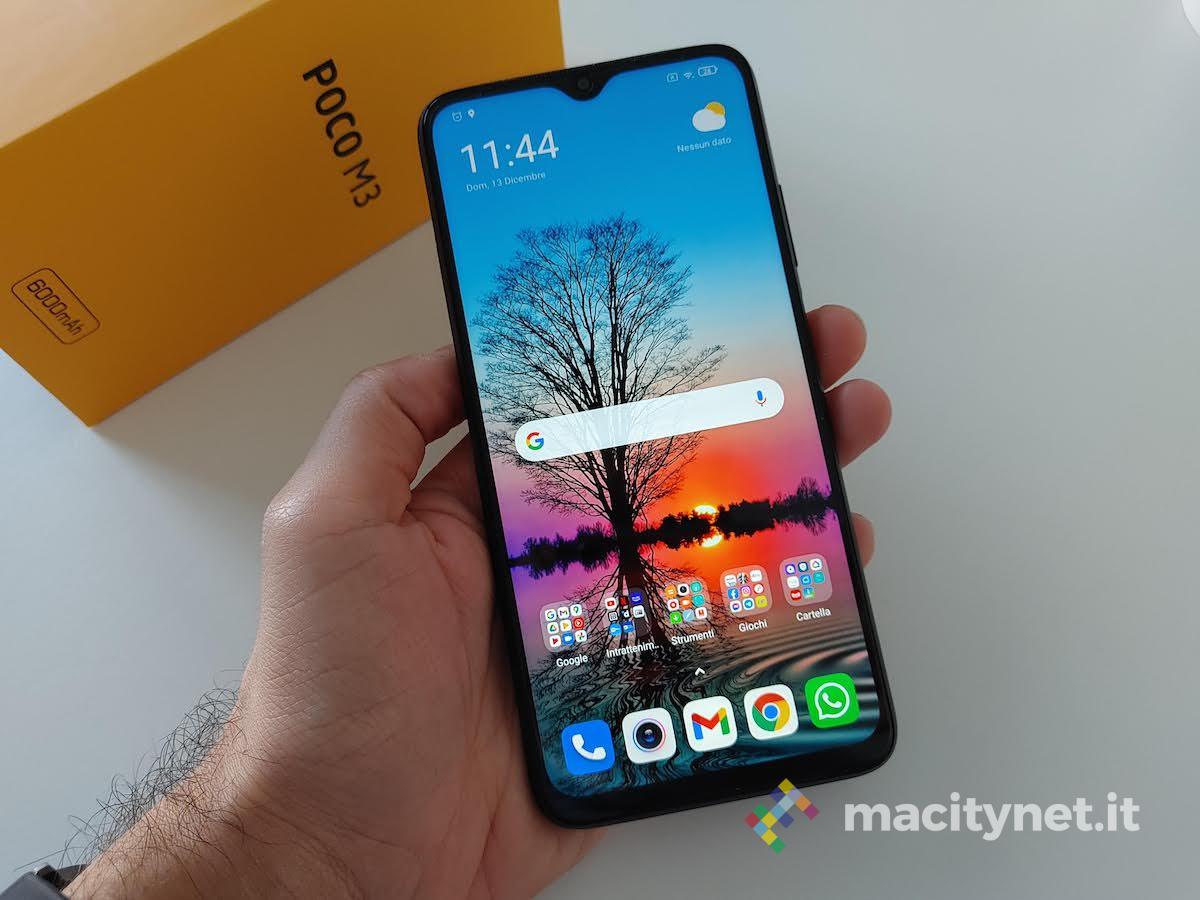
Big, very big, the camera module, or rather the glass in which the set of three cameras is incorporated. To achieve a certain visual balance, Poco's logo is shown on the opposite side to the one the sensors insist.
If the price list says a very low price, the characteristics of the screen seem to be those of a more expensive mid-range. It is a Full HD + unit, certainly not the brightest, nor with the best yield for colors and shades, but still excellent for the price of the terminal. Excellent, however, the screen-to-body ratio, which does not leave unsightly frames. Overall, aesthetically it is a good terminal.
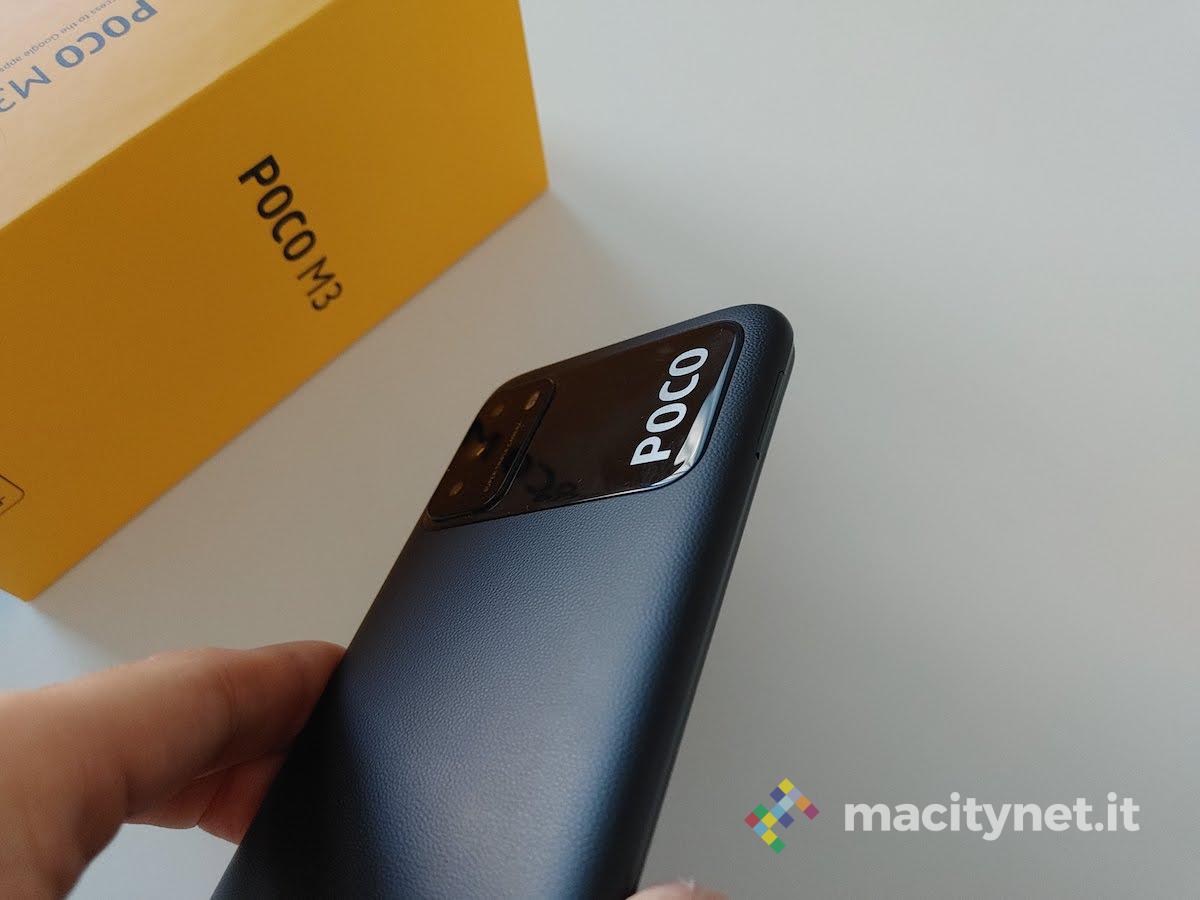
Obviously, hardware compromises are common in this price range, to minimize costs. Nonetheless, POCO M3 offers a Snapdragon processor. This is, specifically, the SOC Snapdragon 662, which certainly does not stand out for speed. In any case, Poco M3 lets itself be used in an overall fluid way, certainly not at the levels of a top of the range. It is not lightning fast, but it is certainly reliable, and with the excellent MIUI 12 on board, it can be used well in everyday life.
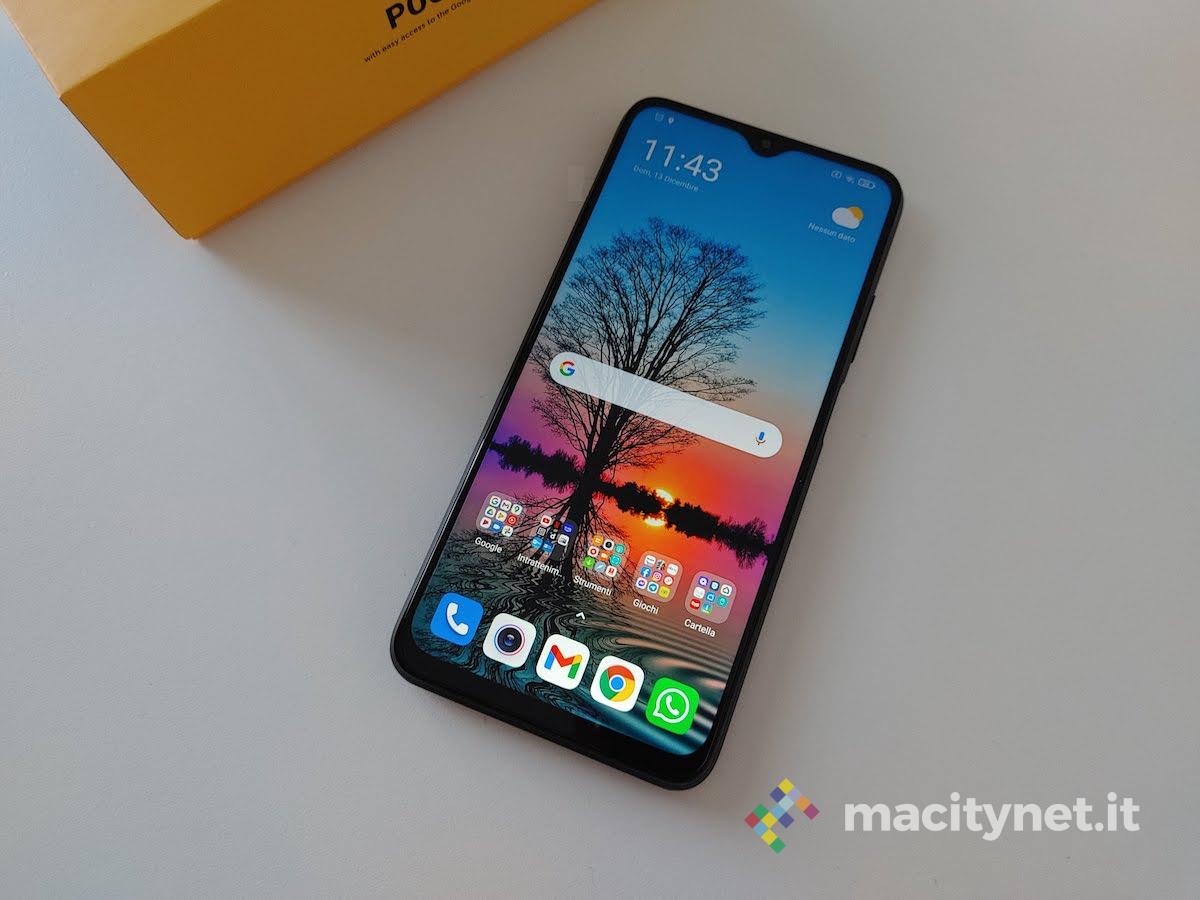
Those who like numbers, will certainly be pleased to see that on Geekbench 5 and Antutu, the CPU performance of the Poco M3 is very similar to that of some devices with Snapdragon 665 on board. The credit is certainly due to software optimization.
Obviously, when you try to play a game with particularly heavy 3D graphics, you will get a less than optimal result. This is the case with PubG, which does not allow HD graphics to be activated: it can only be run with an average frame rate option with balanced graphics.
You will get an improvement in the frame rate at lower settings. It is not a terminal to recommend to players, even if for casual gaming it can certainly be a valid ally: with titles of the caliber of Clash Royale or the like we have not encountered any problems; moreover, the battery – as we will say later – will allow you to play for a long time.
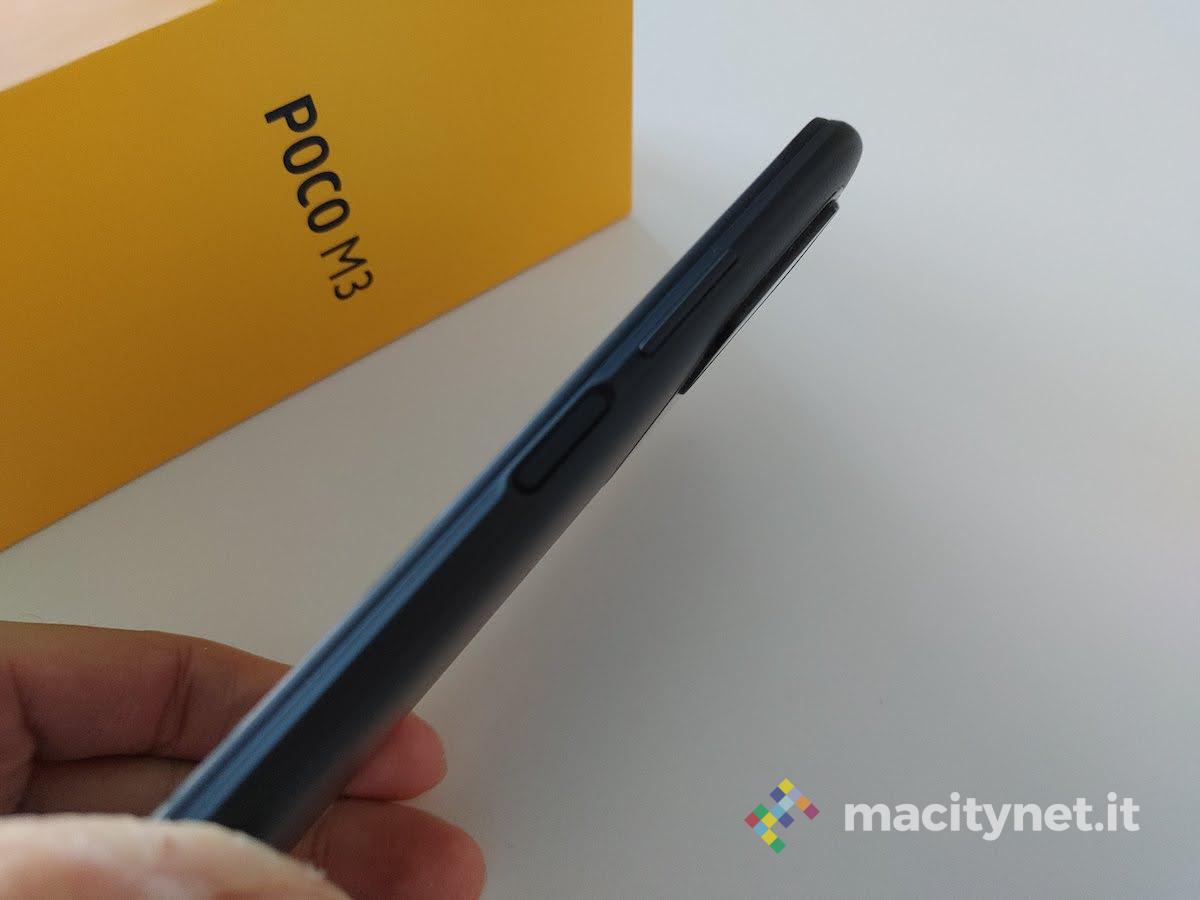
In everyday use, as already mentioned, this is not the fastest smartphone, and you will notice some small slowdowns, especially for those used to the various top of the range. even the fingerprint sensor, although accurate and reliable, takes at least half a second to unlock the terminal when the display is off.
Camera
Where Poco M3, unfortunately, disappoints, is the rooms department. Arguably to keep costs down, the ultra-wide-angle lens was sacrificed for a better quality 48MP primary lens. This is certainly a choice to be appreciated, and which on the whole will serve to return better photos. The other two cameras feature a macro lens and a depth-of-field lens for portraits.
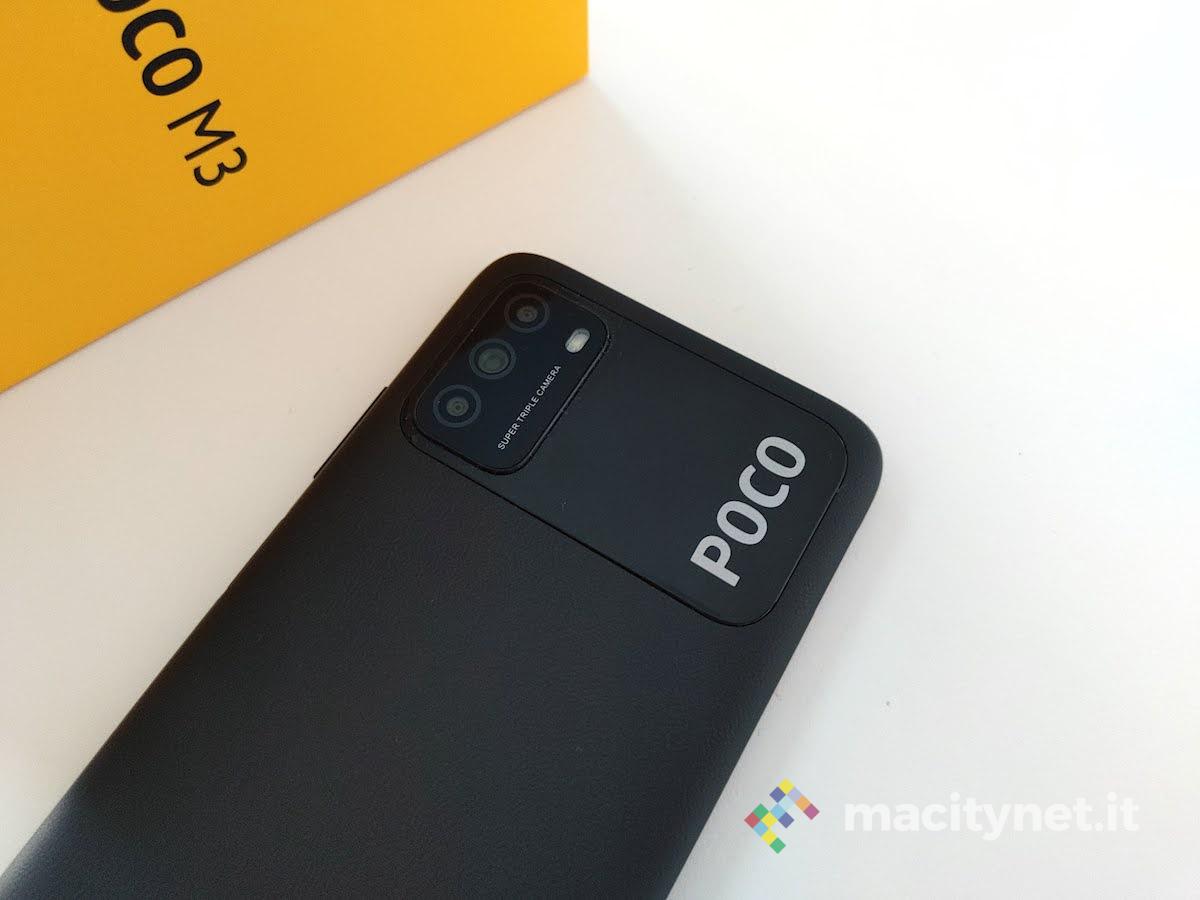
In good lighting conditions the images presented sufficient colors, with good dynamic range. And thanks to the native resolution of 48MP, the main sensor takes high-resolution photos with good details.
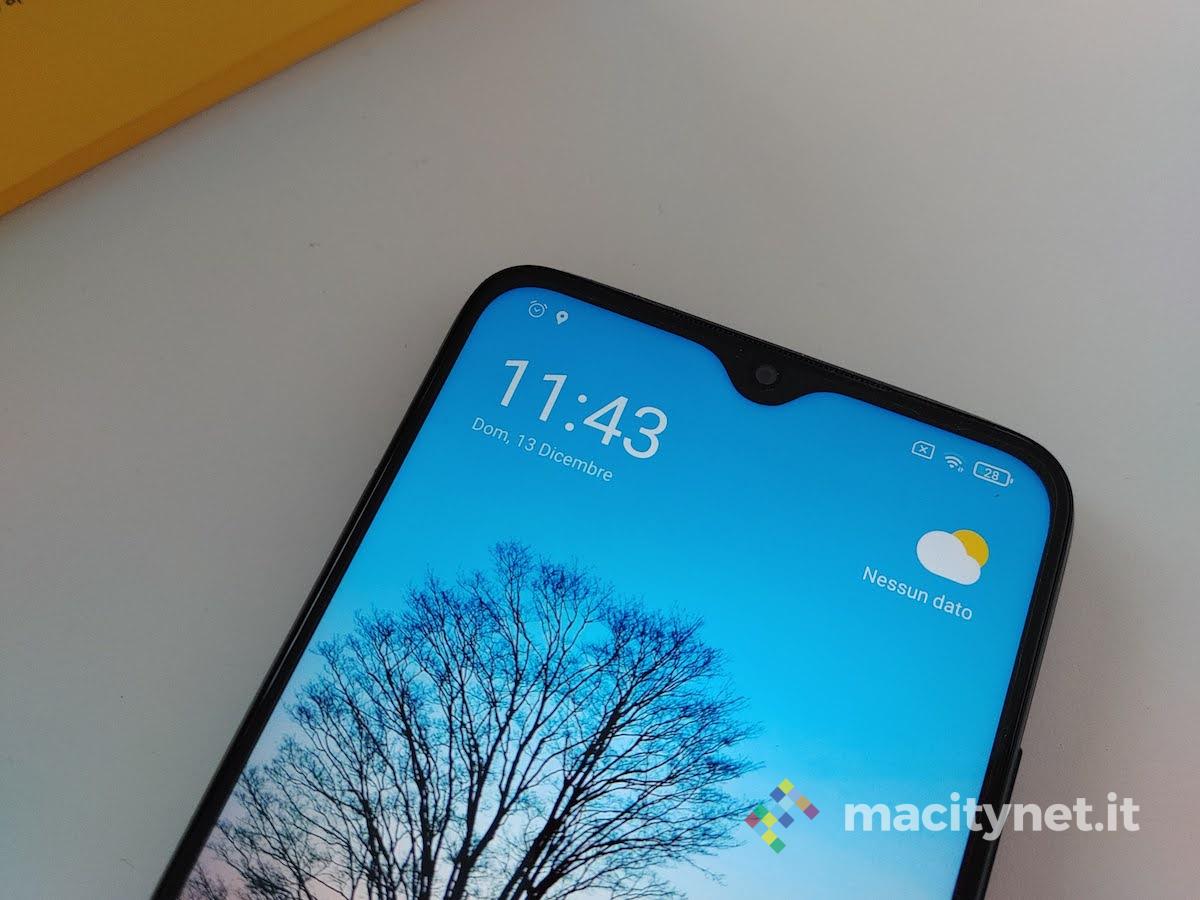
Obviously, due to the lack of OIS, the videos will have to be shot with a particularly steady hand, in an attempt to get a good result. Still, another problem is low-light photos. Exposure is also too aggressive in some scenes, which could lead to loss of detail and low light
Still again, when taking night photos with lighting present, the exposure is balanced, but as soon as you switch to extremely dark scenes, the disadvantages of this sensor are evident. Even more so when you try to take a selfie in low light conditions, with particularly noisy images.













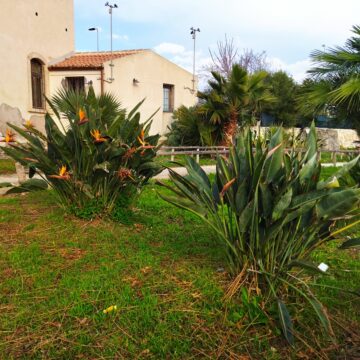

Overall, however, we cannot fail to appreciate the efforts of Poco, which reaches a good overall quality level, with a good value for money.
Battery
Poco M3, on the other hand, is a champion of autonomy, thanks to a 6000 mAh battery that has far exceeded our wildest expectations, especially for an inexpensive device. In one hour of play, a little more than 10% of battery is consumed, while it drops to half if you use social media at the same time. Same thing for one hour of video playback.
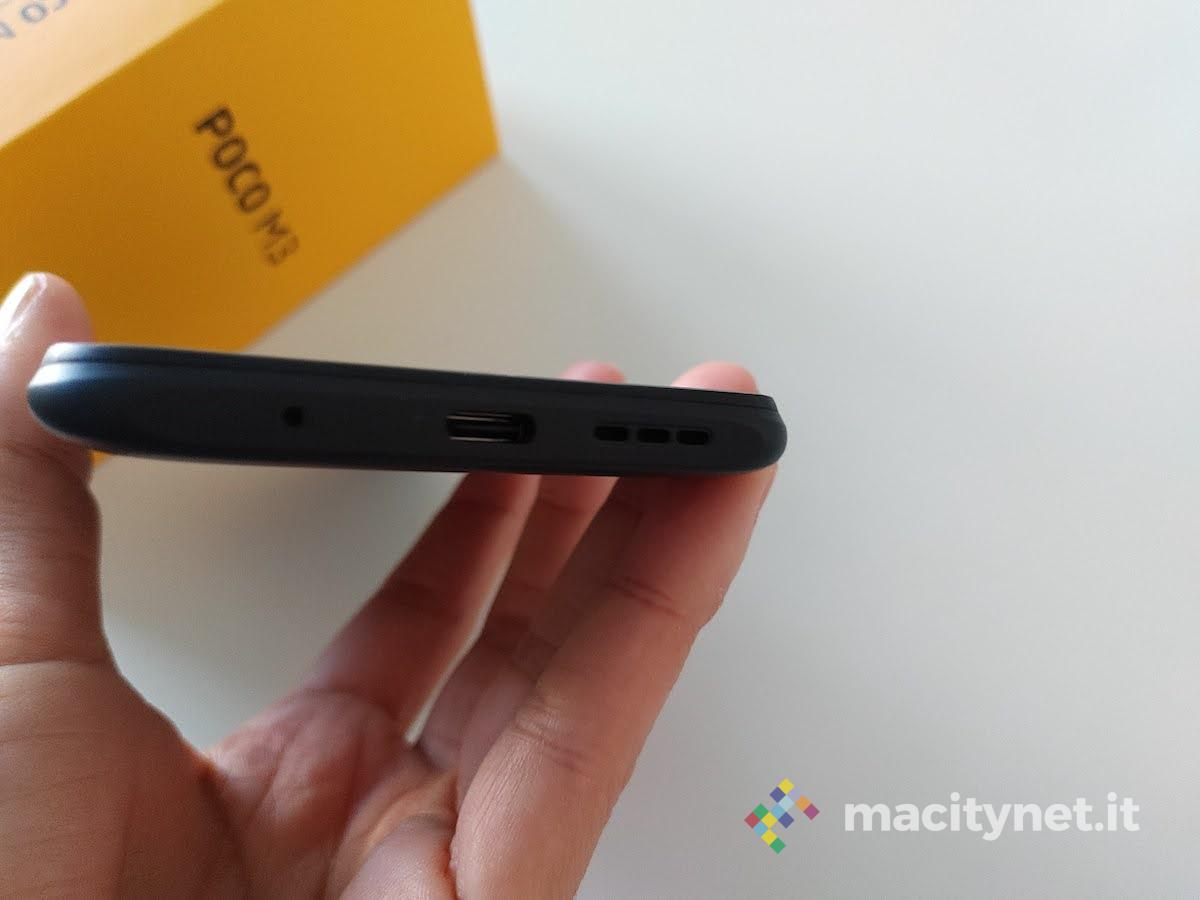
Moreover, Poco M3 is equipped with support for 18 W fast charging, which is not the fastest on the market, but which allows you to fully recharge this impressive battery in two hours.
Obviously, an applause must be made to the operating system, maximally optimized. Present on board the MIUI 12, which enjoys the Google feed on the left of the Homepage, as well as the renovated control center, in full Apple style.
Conclusions
Poco M3 stands as a low-end terminal, with a very economical price list, but which would like not to give up anything. Nice design, modern and minimal although not original, and sufficient performance for basic use. In excellent lighting conditions it also takes enough photos, while for the gaming department it is better to stop at casual games. Where it stands out, however, is certainly in the autonomy department, practically unbeatable.
In the 4 + 64 version it starts at just over $ 150 and can be found at this address in black, yellow and blue colors.





